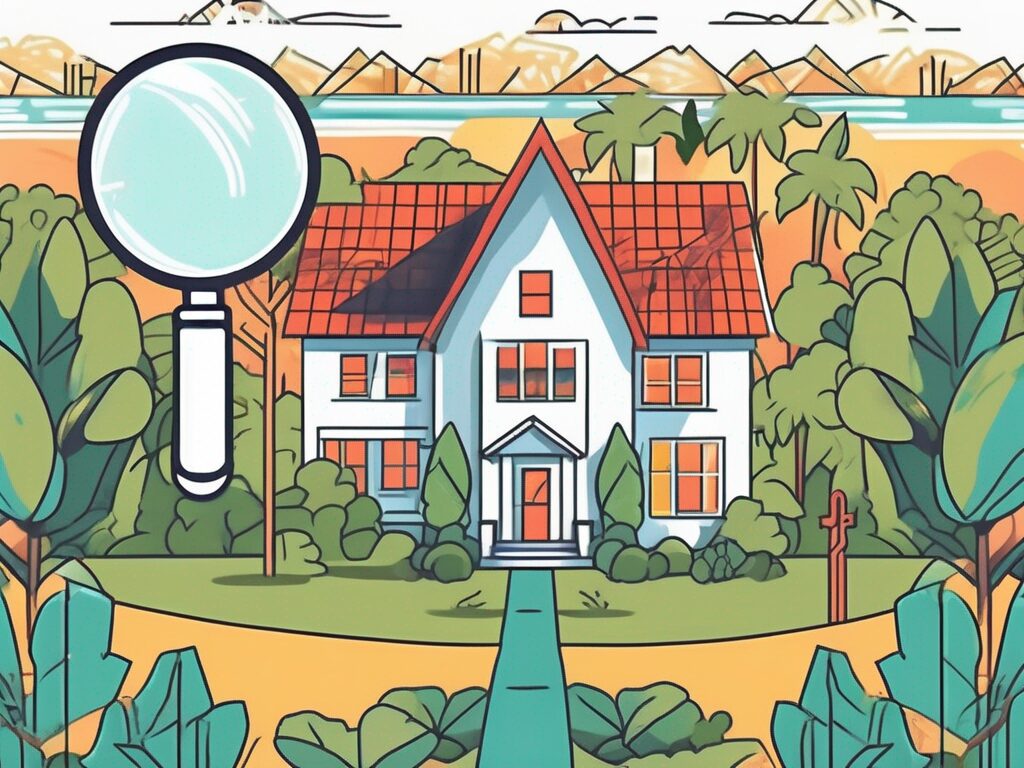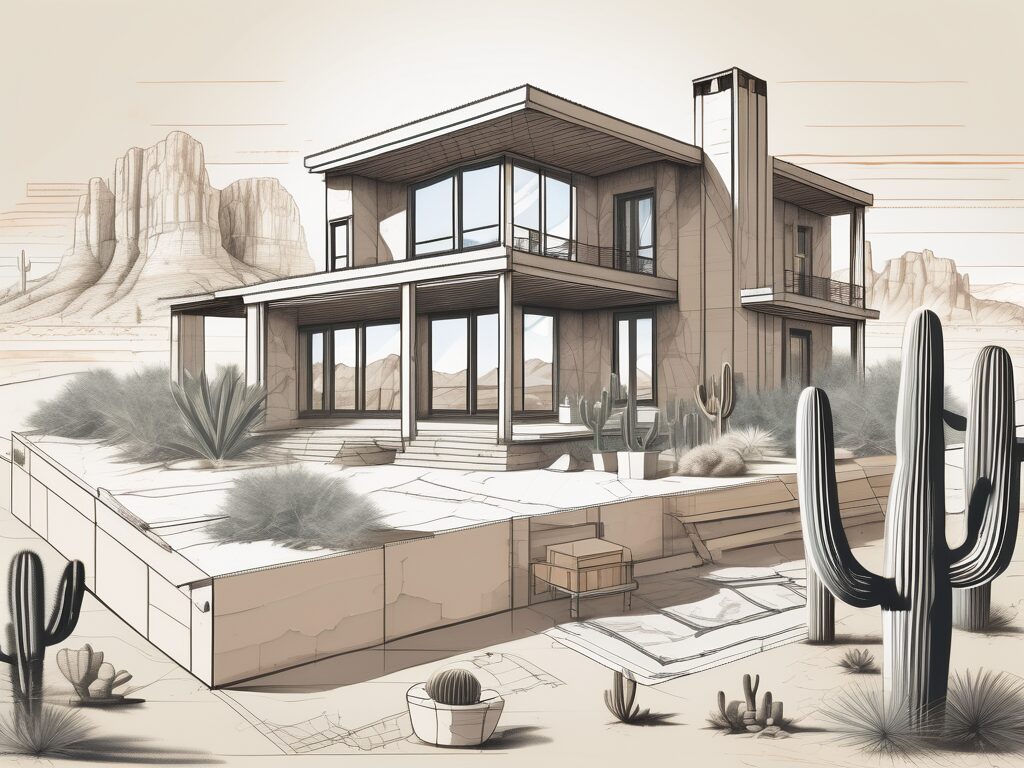
Agent A-Team or Solo Superhero? Finding the Right Real Estate Partner for Your Selling Journey in Wildwood Florida
When it comes to selling your home in Wildwood, Florida,…
January 29, 2024
Building a house is an exciting venture, but it can also be one of the most expensive investments you’ll make in your lifetime. If you’ve set your sights on the great state of Texas for your dream home, it’s essential to understand the costs involved. In this ultimate guide, we’ll break down the expenses, considerations, and tips for estimating the cost of building a house in Texas in 2023. From buying a plot of land to selecting finishes and fixtures, we’ll cover all the essential aspects.
Before you can start building your dream home, you’ll need to find the perfect plot of land. Land prices in Texas can vary significantly based on location, size, and zoning regulations. It’s crucial to research different areas and consider factors such as accessibility, proximity to amenities, and neighborhood desirability. Additionally, hiring a real estate agent specializing in land transactions can guide you through the process and help negotiate the best deal.
Once you’ve found the ideal location, you’ll need to evaluate the size of the plot needed for your dream home. Texas offers a diverse range of landscapes, from sprawling countryside lots to urban infill opportunities. Determine the amount of land required based on your desired house size, outdoor amenities, and future expansion possibilities.
When considering the cost of buying a plot of land, it’s important to factor in additional expenses such as surveying fees, title insurance, and closing costs. These costs can vary depending on the location and complexity of the transaction.
With the land secured, it’s time to lay the groundwork for your dream home. Foundation costs should be a significant consideration, especially in Texas where shifting soil and extreme weather conditions pose unique challenges. It’s crucial to consult with a structural engineer or foundation specialist to evaluate the soil conditions and determine the appropriate foundation type for your specific location.
Foundations in Texas can range from slab-on-grade to pier and beam constructions. While slab foundations are the most common and cost-effective option, they might not be suitable for areas with highly expansive soil. The type of foundation you choose will impact both the initial construction cost and potential long-term maintenance costs.
In addition to the foundation itself, it’s important to consider other related costs such as excavation, drainage systems, and waterproofing measures. These expenses are essential for ensuring the stability and longevity of your home.
Once the foundation is in place, it’s time to frame your dream home. Framing costs typically include materials, labor, and equipment rental. The material choice can significantly impact the overall cost, with options ranging from traditional wood framing to more expensive steel or engineered lumber.
When estimating framing costs, take into account the complexity of the design, the number of floors, and the size of the house. Keep in mind that additional features such as vaulted ceilings, skylights, or intricate architectural details can significantly increase the framing expense. Seeking multiple bids from experienced contractors can help you find the best value for your money.
In addition to the framing itself, it’s important to budget for other structural components such as roof trusses, floor joists, and load-bearing walls. These elements are crucial for the overall stability and strength of your home.
Your roof is your home’s first line of defense against the elements, making it a significant investment. Roofing costs in Texas vary depending on the type of material chosen, the size and complexity of the roof, and the region’s climate. Common roofing materials include asphalt shingles, metal, tile, and slate.
Consider factors such as durability, energy efficiency, and aesthetics when selecting a roofing material. Keep in mind that while budget-friendly options like asphalt shingles might have a lower upfront cost, they might require more frequent replacements compared to more durable options like metal or tile. Consulting with a roofing contractor can provide valuable insights into material choices and estimated costs.
In addition to the roofing material itself, it’s important to budget for other roofing components such as underlayment, flashing, and ventilation systems. These elements are essential for ensuring the longevity and performance of your roof.
The choice of siding material can greatly impact both the overall appearance and maintenance requirements of your home. In Texas, popular siding options include vinyl, fiber cement, brick, and stucco. Each material has its pros and cons in terms of cost, durability, maintenance, and energy efficiency.
Consider factors such as the initial installation cost, long-term maintenance requirements, and the climate in your chosen location. For example, vinyl siding might be a cost-effective option initially but may not withstand extreme Texas weather conditions as well as other materials. Consulting with a siding professional can help you make an informed decision based on your specific needs and budget.
In addition to the siding material itself, it’s important to budget for other siding components such as insulation, moisture barriers, and trim. These elements contribute to the overall performance and aesthetics of your home’s exterior.
As you plan the interiors of your dream home, don’t forget about the essential appliances that make everyday life convenient. These include kitchen appliances, laundry machines, water heaters, and HVAC systems. While it’s tempting to go for high-end, feature-rich appliances, consider both your budget and long-term energy efficiency.
Research different appliance brands and models, paying attention to energy ratings and customer reviews. Energy-efficient appliances not only save you money on utility bills but also contribute to a more environmentally friendly home. Properly budgeting for appliances early on can help avoid surprises and ensure you have the necessary funds to complete your dream home.
In addition to the appliances themselves, it’s important to budget for other related expenses such as installation, venting, and electrical requirements. These costs are essential for ensuring the proper functioning and safety of your appliances.
Texas is known for its scorching summers, making a reliable and efficient HVAC system crucial for year-round comfort. HVAC costs depend on factors such as the size of your home, the chosen system type (split system, ductless, or geothermal), and energy efficiency ratings.
While energy-efficient systems may have a higher upfront cost, they can result in substantial long-term savings in energy bills. It’s worth consulting with HVAC professionals to evaluate the specific requirements of your home and determine the most cost-effective solution for your climate zone and usage patterns.
In addition to the HVAC system itself, it’s important to budget for other components such as ductwork, vents, and thermostats. These elements are essential for distributing and controlling the airflow throughout your home.
Installing a plumbing system that meets your needs while staying within budget is a critical aspect of home construction. Plumbing costs depend on factors such as the size of your home, the number of bathrooms, and the complexity of the design.
Research different plumbing materials, fixtures, and installation methods to find the right balance between quality and affordability. Consider factors such as water efficiency, local building codes, and long-term maintenance requirements. Working with a licensed plumber can ensure compliance with regulations and provide valuable guidance on cost-effective plumbing solutions.
In addition to the plumbing system itself, it’s important to budget for other plumbing components such as water heaters, fixtures, and drainage systems. These elements are essential for the proper functioning and convenience of your home’s plumbing system.
Creating a safe and functional electrical system is essential for your new home. Electrical costs depend on factors such as the size and design of your home, the number of outlets and switches, and the complexity of the wiring.
Ensure that your electrical system meets local building codes and safety standards. Consider the number and type of electrical devices you plan to use, as this can impact the load requirements and dictate the size of the electrical panel needed. Hiring a licensed electrician can ensure a safe and compliant electrical installation and help you navigate the complexities of estimating electrical costs.
In addition to the electrical system itself, it’s important to budget for other electrical components such as lighting fixtures, outlets, and circuit breakers. These elements are essential for providing adequate lighting and power throughout your home.
Before you can start construction, it’s essential to obtain the necessary building permits. The permitting process can vary between municipalities in Texas, with some areas requiring additional documentation or inspections.
Start by researching the specific requirements of your chosen location, such as zoning restrictions, permits, and fees. Budget for permit costs and potential delays in the construction timeline. Consulting with local building departments or hiring a permit expeditor can streamline the process and help you avoid costly mistakes.
In addition to building permits, it’s important to budget for other related expenses such as impact fees, development fees, and utility connection fees. These costs can vary depending on the location and specific requirements of your project.
The finishing touches of your new home can greatly impact its overall appearance and functionality. From flooring and cabinetry to countertops and lighting fixtures, the choices are endless. However, it’s important to set a realistic budget early on.
Research different finish materials, such as hardwood flooring, ceramic tiles, or laminate countertops, to understand their cost ranges and long-term durability. Consider consulting with an interior designer or architect to help you make informed decisions that align with your desired aesthetic and budget.
In addition to finishes and fixtures, it’s important to budget for other interior elements such as paint, trim, and hardware. These details contribute to the overall visual appeal and functionality of your home’s interior.
When embarking on the journey of building a custom home, one of the most crucial decisions you’ll make is hiring an architect. An architect is not just a designer; they are the bridge between your vision and the reality of your dream home. They possess the expertise to translate your ideas into a functional and aesthetically pleasing design that fits your lifestyle and budget.
Architects offer a range of services that are essential in the custom home building process. They begin by working closely with you to understand your needs, preferences, and aspirations for your home. From there, they develop initial design concepts that capture the essence of your vision. These concepts are then refined and transformed into detailed construction documents, which serve as the blueprint for your home’s construction.
But the architect’s role doesn’t end there. They also play a crucial role in project management, overseeing the construction process to ensure that the design is executed accurately and efficiently. This includes coordinating with contractors, managing timelines, and addressing any unforeseen challenges that may arise during construction.
It’s important to note that hiring an architect is not without its costs. Architects typically charge a percentage of the total construction budget as their fee. This fee covers the extensive range of services they provide, from initial design to project management. While it may add to the overall cost of building a custom home in Texas, the expertise and guidance an architect brings to the table are invaluable in creating a home that truly reflects your vision.
When it comes to building a custom home, accurate knowledge of the property boundaries is of utmost importance. This is where land surveys come into play. A land survey is a detailed assessment of the property, identifying its boundaries, potential encroachments, easements, and shared property lines. It provides an accurate understanding of the land, ensuring that your construction plans align with the legal requirements and restrictions.
Consulting with a licensed land surveyor is essential to conduct a comprehensive survey of your chosen property. The surveyor will meticulously measure and map the land, taking into account existing land records and any relevant local regulations. The cost of a land survey can vary based on factors such as the size and complexity of the plot, the level of detail required, and the rates charged by the surveyor.
While a land survey may be an additional expense, it offers peace of mind and helps avoid potential legal disputes in the future. By having a clear understanding of the property boundaries, you can confidently proceed with the construction process, knowing that your home is being built within the confines of your land.
Building a house in Texas is an exciting endeavor, but it requires thorough planning and a comprehensive understanding of the associated costs. By carefully considering the expenses involved, budgeting for each stage of construction, and seeking professional advice when needed, you can estimate the cost of building your dream home with confidence.

If you want the Richr team to help you save thousands on your home just book a call.
 Book a call
Book a call